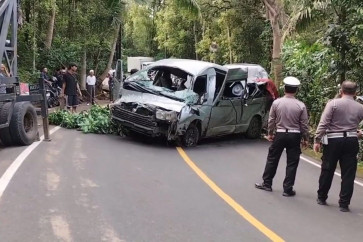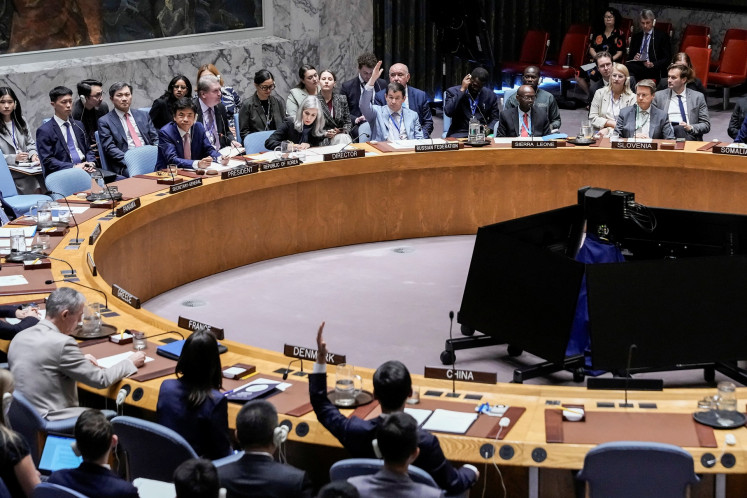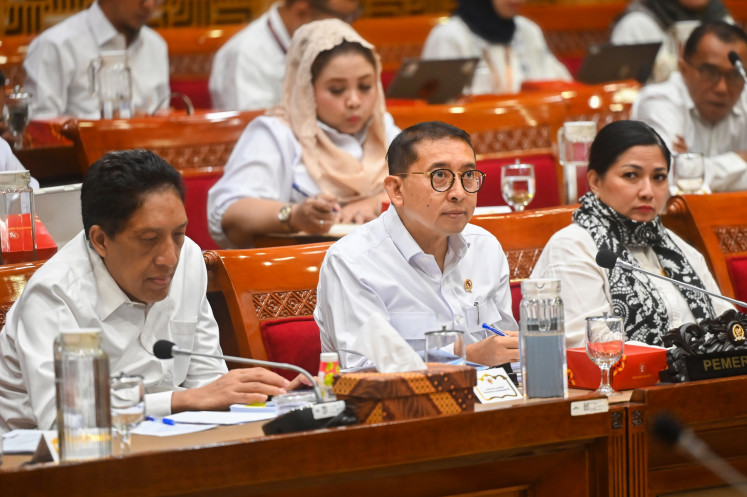Popular Reads
Top Results
Can't find what you're looking for?
View all search resultsPopular Reads
Top Results
Can't find what you're looking for?
View all search resultsAftershock and aid follow earthquake
Whose cap?: A school cap lies on the remains of a landslide caused by an earthquake in Cianjur, West Java on Thursday
Change text size
Gift Premium Articles
to Anyone
W
span class="caption" style="width: 291px;">Whose cap?: A school cap lies on the remains of a landslide caused by an earthquake in Cianjur, West Java on Thursday. The 7.3-magnitude earthquake killed at least 57 people and damaged thousands of houses. JP/J. Adiguna
The 7.3-magnitude quake that struck West Java on Wednesday has killed at least 57 people and injured hundreds more as of Thursday afternoon, with government agencies warning of aftershocks
and financial aid beginning to pour in for victims.
The National Disaster Management Agency (BNPB) reported on its website www.bnpb.go.id that as of Thursday afternoon the quake centered off the coast of Tasikmalaya, West Java, had caused 57 casualties, all of whom were West Java residents.
Cianjur recorded the highest death toll of 21 people, followed by Garut, Tasikmalaya and Bandung with 10, nine and eight casualties, respectively.
Other West Java regencies and towns reporting casualties were Ciamis, Sukabumi, Bogor and West Bandung.
The Health Ministry’s Crisis Center reported that at least 116 people were severely wounded, while 422 others had suffered from minor injuries caused by the powerful quake, which was also felt in Jakarta, Lampung and Bali.
The BNPB added the quake had severely damaged at least 11,000 houses and slightly damaged more than 13,000 others in 10 West Java towns and in Cilacap, Central Java, causing 3,000 people to flee.
A number of buildings in Jakarta also reportedly experienced mild damage, while more than a dozen Jakartans were hospitalized for shock.
The epicenter of the 7.3-magnitude quake was located 30 kilometers under the sea, some 142 kilometers southwest of Tasikmalaya.
Early Wednesday morning, a 5.3-magnitude earthquake hit Mentawai, West Sumatra and on Thursday morning another 5.3-magnitude quake rocked Nabire, Papua.
Head of the seismology center at the Meteorology, Climatology and Geophysics Agency (BMKG), Suhardjono, told The Jakarta Post the three recent quakes were connected to each other as their epicenters were located on the meeting points of three major tectonic plates: the Eurasian, the Indo-Australian and the Pacific plates.
Around Tasikmalaya, he said, 13 aftershocks occurred following the powerful quake that hit at 2:55 p.m. on Wednesday.
He warned that Indonesians must prepare for strong earthquakes in the future.
“The meeting points of the three plates has the potential to release energy through quakes. A quake will be followed by other quakes until a balance [of energy] is reached,” Suhardjono said.
“As long as the earth still rotates, the bowels of the earth will keep producing convection currents, which will prompt the movement of the plates. We in Indonesia have to be aware of this as we live on top of the three plates.”
On Thursday, financial aid began to pour in for the quake victims, including food, medicine and water from various government agencies and the private sector.
Antara state news agency reported from New York that the United Nations in coordination with the Indonesian government, would soon take part in a mission to help quake victims.










